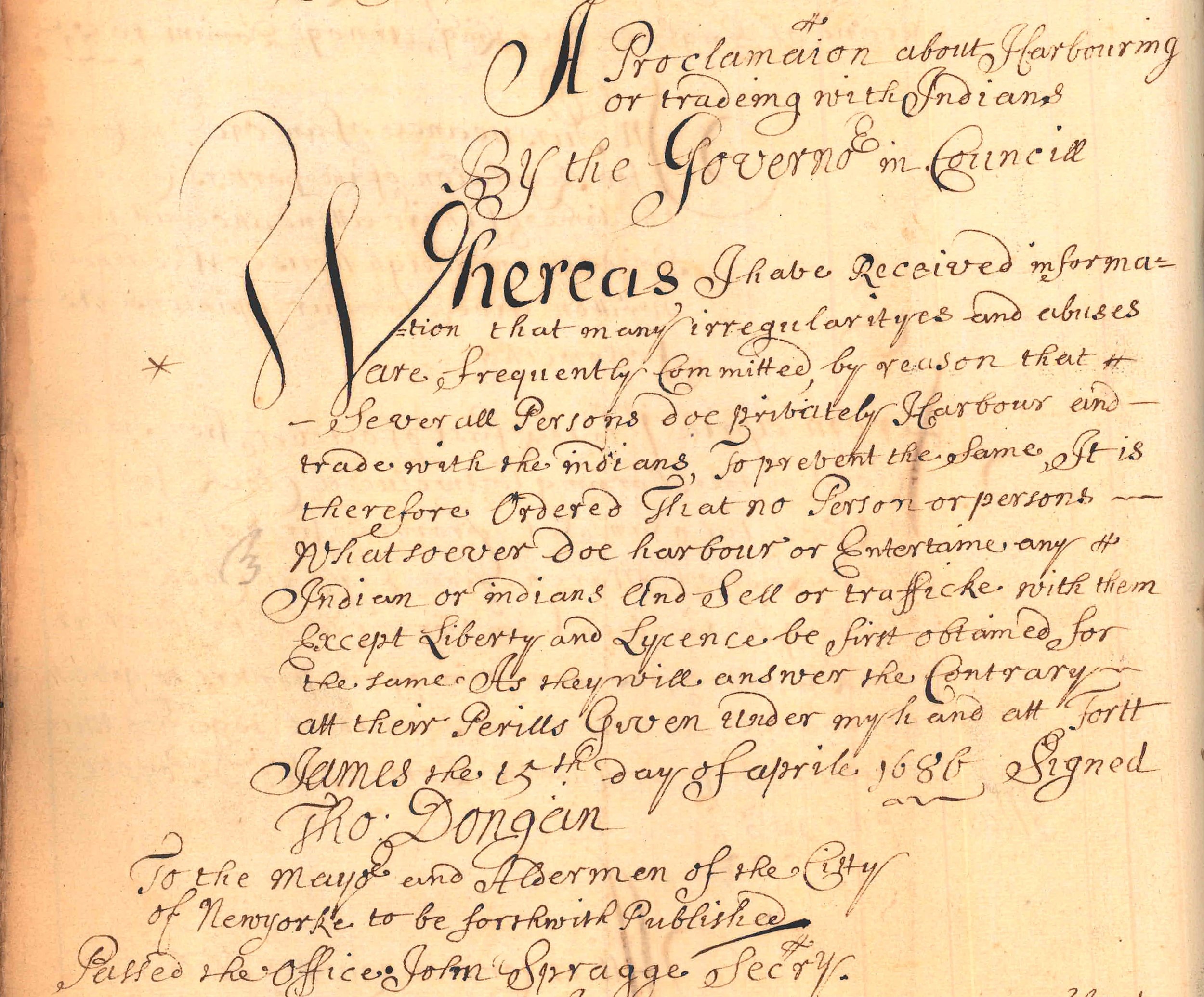Earlier this week, the Department of Records and Information Services (DORIS) launched an interactive map, accessible on both desktop and mobile devices, to help people connect with the stories behind nearly 2,500 co-named streets, intersections, parks and other locations throughout the City.
NYC Honorary Street Names Map. Department of Records and Information Services, 2024.
Perhaps you’ve seen the markers. They are usually attached to a signpost just beneath the street name. For example, a sign at the corner of Park Row and Spruce Street in Manhattan informs us that it is co-named “Elizabeth Jennings Way.” By clicking that location on the map you will learn that the City Council designated Park Row between Beekman and Spruce Streets in honor of Jennings, a Black teacher who integrated the City’s trolleys in 1854 by refusing to “get off” when instructed.
Just a block away, at the northeast intersection of Park Row and Beekman Street, a sign says it is also known as Susan B. Anthony and Elizabeth Cady Stanton Corner. Map users will find out that in 2004 the Council honored the two women’s suffrage pioneers for their contributions to gender equality.
Street Sign, Susan B. Anthony & Elizabeth Cady Stanton Corner, 2024.
The origins of the map initiative date to 2023 when the New York City Council passed legislation sponsored by Councilmember Gale Brewer mandating online access to biographical and/or background information about persons or entities honored by the Council with a co-named street, intersection, park, or playground.
Mayor Eric Adams designated DORIS as the agency responsible for posting co-named street information on its website. Initially, DORIS published the City Council local laws containing the information online in the Government Publications Portal. To make the co-named street data more accessible, the agency’s application developers and interns created an interactive map that people walking around the city can access on their phones.
Street Sign, Elizabeth Jennings Place, 2024.
Using mapping software from the Office of Technology and Innovation (OTI), DORIS’ application developers built the map. They created a form to enter the biographical or background information contained in local laws termed “street renaming bills” that have been passed by the City Council between 2001 and the present. The data on the form is linked to the appropriate location on the map. During the summer of 2024, a team of interns from CUNY and the PENCIL programs transferred the data about locations and each of the 2,496 individuals into the form.
The map is searchable by the name of the individual, zip code, and categories such as “firefighter” or “police officer.” So far, there are 1,610 co-named intersections, and 886 co-named streets.
Residents of the Astoria neighborhood in Queens are not likely to be surprised by the co-named Tony Bennett Place at the intersection of 32nd Street and Ditmars Boulevard. The co-naming by the Council in 2024 honored Astoria-native Bennett for his lifetime in music that included 20 Grammy Awards, and more than 50 million records sold worldwide.
NYC Honorary Street Names Map, Lieutenant Theodore Leoutsakos Way, Astoria, Queens. Department of Records and Information Services, 2024.
Not all co-named streets honor famous people. For example, there is Lieutenant Theodore Leoutsakos Way, just two blocks away from Tony Bennett Place, at the intersection of 29th Street and 21st Avenue in Astoria. In 2016, the Council honored Lt. Leoutsakos for his service as a first responder during the 9/11 terrorist attacks at the World Trade Center. A United States Air Force Veteran who served during the Vietnam War, Leoutsakos was diagnosed with pancreatic cancer as a result of his time spent at Ground Zero. The diagnosis came shortly after he retired from 24 years as a New York State Court Officer.
In 2002 and 2003, local laws enacted by the City Council included co-named streets for more than 400 first responders killed on 9/11. Many of those streets lack biographical information. DORIS is working with the Council to gather the biographical information for inclusion in upcoming local laws. The information will subsequently be added to the map.
NYC Honorary Street Names Map, Tillie Tarantino Way, Williamsburg, Brooklyn. Department of Records and Information Services, 2024.
In the event that you detect an error in the biographical information, contact your local City Councilmember. Changes to the information on the map will be made after the Council includes the correction in a new street renaming law.
If a sign with the name of the co-named street is missing from its designated location, go to nyc.gov/311 or call 311 to report it.
DORIS will continue to add data to the online map, using the information in local laws pre-dating 2001.
At the launch of the map, Councilmember Gale Brewer remarked that “Our City’s history is long and deep, and we need tools to remember those who came before us—whether their name is on a building or on a street sign—and why they’re being honored. Think of this as Wikipedia for street names!”






















